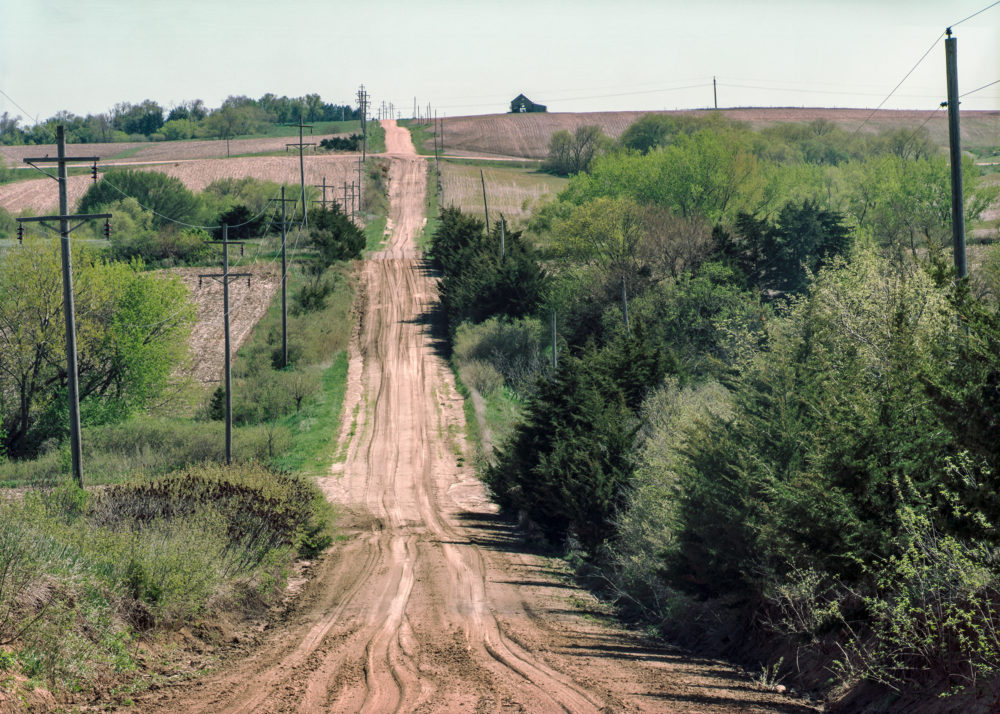My story-telling approach is cinematic.
By that I mean that instead of trying to find that one frame that sums up a place, person or situation I tend to think in terms of sequences of images. Wide shots, medium shots and close-ups, as well as significant details that when assembled give a complex portrayal of the subject. And I usually take several years to complete a project going back many times to create a meaningful collection of images portraying a wide range of feelings and moods.
Some of the best places to go are where the natural geography of the land asserts and reasserts itself against the nearly ubiquitous superimposed grid of county roads and section lines. There, due to the steady thinning of the population and decreased use, bridges stand abandoned, roads revert to unimproved dirt tracks, and the rectilinear is allowed to give way to the undulating.
In Nebraska, where almost all of our land is in private hands, these occasional nooks and crannies, folds and crevices are where a person can feel the tingle of solitude, privacy and an intimacy with what the land itself wants to be.
The Bohemian Alps has a lot of “minimum maintenance” roads. I’ve driven them all, but not when they are wet. Loess is like butter when wet. But I do try to find times to go to the Alps when the weather isn’t so nice, when it might rain, snow or is foggy or cloudy. That makes for more interesting pictures and it more accurately represents the internal and external realities of our day-to-day lives.
A lot of these pictures are as much about how I was feeling on a particular day and subsequently recognized when I saw them as they are about what is portrayed objectively.








